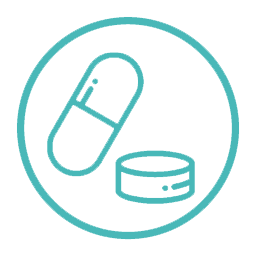Lesson Plans by grade level
Knowing the Facts on Impaired Driving

In Ontario, it is illegal to operate any type of motor vehicle while under the influence of alcohol or drugs. This applies to all types of motor vehicles, including cars, trucks, boats, snowmobiles and off-road vehicles.
Consequences for impaired driving are serious and can result in a criminal offence under the Criminal Code of Canada:
- Licence suspension
- Vehicle impoundment
- Monetary fines and penalties
- Mandatory education or treatment program
- Requirement to install an ignition interlock device in your vehicle
- Jail time
- Criminal record

Ontario has a zero-tolerance approach to both alcohol and drugs for all young and novice drivers. This means that young drivers (21 and under) and novice drivers of any age in the Graduated Licensing System (holding licenses G1, G2, M1, or M2) must not have any presence of alcohol or drugs when behind the wheel. Drivers who violate this face a 3-day immediate licence suspension along with other suspensions and penalties once convicted in court.

- An impaired driver puts themselves and everyone else on the road in danger.
- Motor vehicle collisions (or incidents) are the leading cause of death among youth aged 16–25, and alcohol and/or drug impairment is a factor in 55% of those crashes.
- It’s not enough to avoid driving impaired; youth also need to avoid riding as a passenger of an impaired driver.
- In 2017, youth who participated in a qualitative research study by the Canadian Centre on Substance Use and Addiction believed that cannabis-impaired driving was safer, or less dangerous, than alcohol-impaired driving. This belief was partly related to the fact that youth didn’t associate the feelings of being high (calm, happy and relaxed) with risky behaviours that could impair driving skills.
- Of youth aged 16 to 19 who had used cannabis in the past 12 months, 27.8% reported driving within two hours of using cannabis.
- 40.9% of youth reported being a passenger of someone who had used cannabis in within two hours of driving.
On the Road

Alcohol is the substance that the majority of young people from grades 7 to 12 will try first, according to Drug Free Kids Canada. Drinking and driving is a deadly combination. One drink can reduce your ability to concentrate and react to things that happen suddenly while you are driving. The more alcohol in your blood, the more difficulty you have judging distances and reacting to sudden hazards on the road. To make matters worse, your vision may be blurred.
Youth who consume alcohol need to understand that their ability to drive will be significantly impaired, and that an impaired driver puts themselves and anyone else sharing the road at risk. Youth who plan to drink need to plan for a safe way to get home.

Any drug that changes your mood, or the way you see and feel, will affect the way you drive. This is not only true for illegal drugs, but also for some prescription and over-the-counter drugs that may impair your driving ability. Drug-impaired driving carries the same criminal charges and provincial sanctions as alcohol-impaired driving in Ontario.
Recreational use of cannabis is now legal across Canada. Use of cannabis by Canadian youth is reported as second-highest in the world in a study by the World Health Organization. However, provincial law (the Cannabis Control Act, 2017) prohibits individuals under the age of 19 from possessing any amount of cannabis.
Cannabis can be consumed in several ways: inhaled, ingested or applied topically. It’s important to understand that there are differences in the way the effects are felt. For instance, the effects of ingesting cannabis are delayed as they can take much longer to appear. Depending on the individual, the effects can take 30 minutes to two hours to be felt.
According to the Canadian Centre on Substance Use and Addiction, these are common misperceptions regarding drugs and driving among youth:
- Impaired driving is not a serious problem.
- Cannabis impaired driving is safer than alcohol-impaired driving.
- Some drug use does not adversely affect driving ability.
- Some drug use improves driving ability due to compensation strategies, and
- The likelihood of being pulled over for impaired driving is low.
The truth is, driving after consuming cannabis raises the risk of a crash.

- If you are planning on drinking, plan for a safe way home.
- Ask your doctor about side effects if you use prescription medication or get allergy shots.
- Read the information on the package of any over-the-counter medicine, including allergy and cold remedies.
- Drugs and alcohol together can combine to impair your driving even more.
- Fatigue and stress will also affect your ability to drive.
Resources
- Arrive Alive Drive Sober. https://www.arrivealive.org/
- CAA National. https://www.caa.ca/driving-safely/cannabis-impaired-driving/
- CAA South Central Ontario. https://www.caasco.com/cannabis
- Canadian Centre on Substance Use and Addiction. https://www.ccsa.ca/youth-and-emerging-adults
- Drug Free Kids Canada. https://www.drugfreekidscanada.org/
- MADD Canada. https://madd.ca/pages/impaired-driving/overview/youth-and-impaired-driving/
- Ontario Ministry of Transportation. https://www.ontario.ca/page/impaired-driving
- Ontario Students Against Impaired Driving. https://www.osaid.ca/
- P.A.R.T.Y. Program. https://partyprogram.com/
- Springboard. https://www.springboardservices.ca/programs-services/weed-out-the-risk/
- Teens Learn to Drive. https://teenslearntodrive.com/
- Government of Canada. https://www.canada.ca/en/campaign/don-t-drive-high.html
- Ophea. https://teachingtools.ophea.net/supplements/cannabis-education-resources


